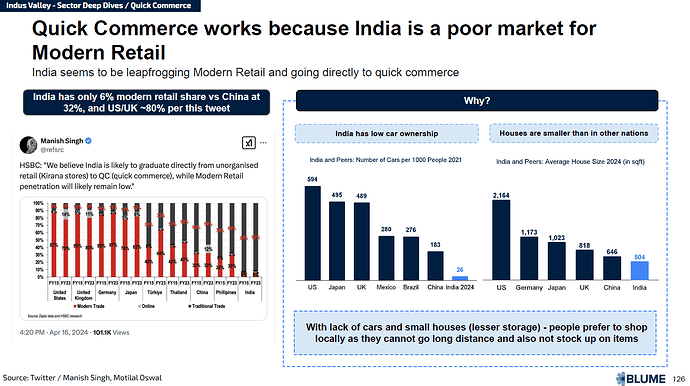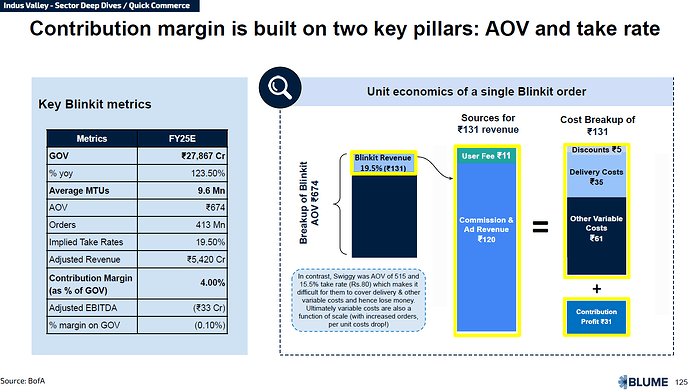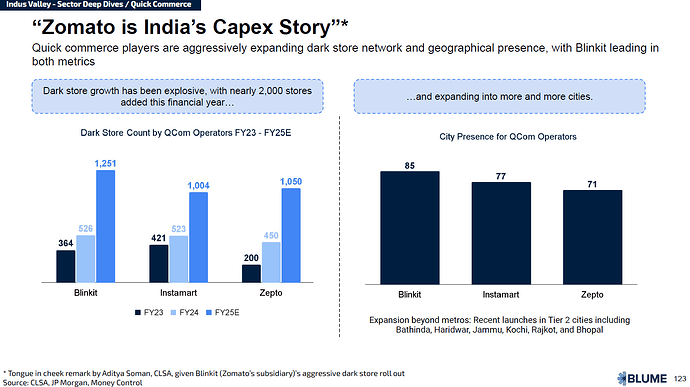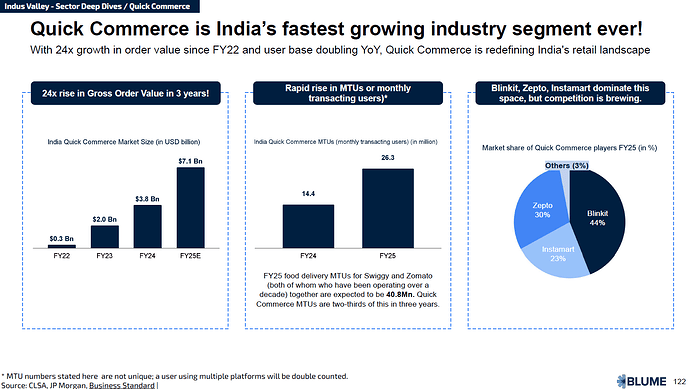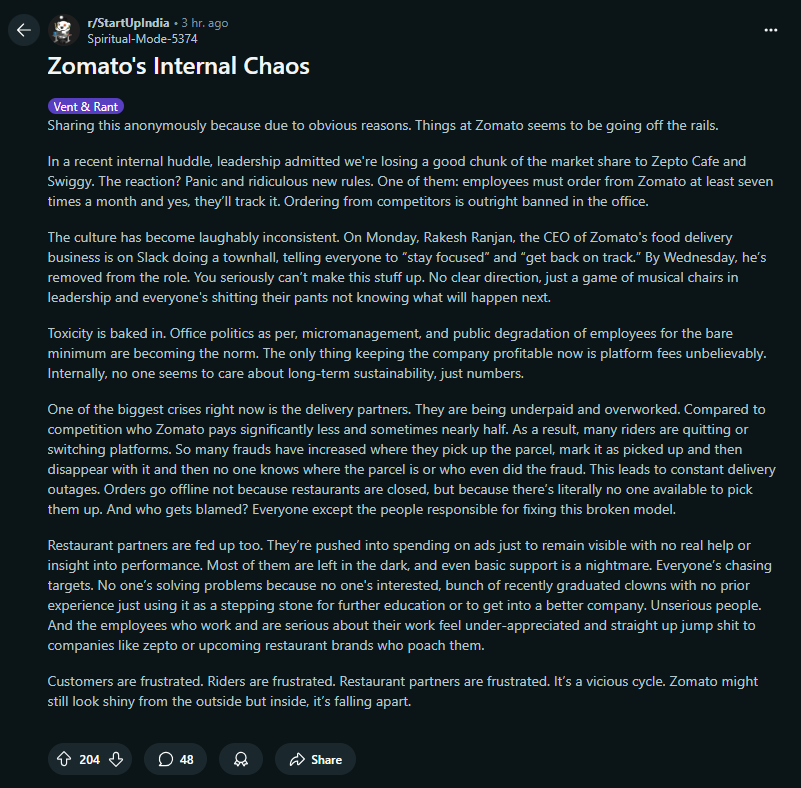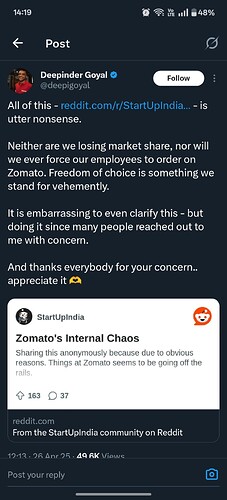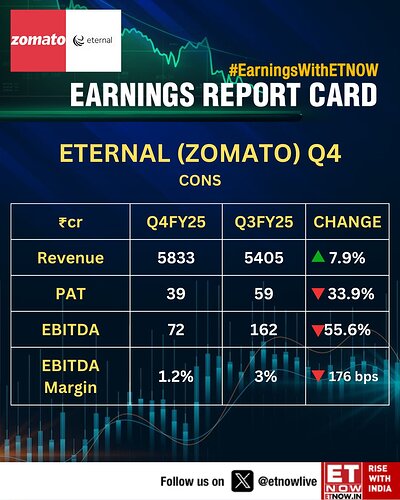Quick commerce is not about offering more discounts or burning cash; it’s primarily focused on convenience. Relying on cash burn is not a sustainable strategy. Compared to competitors like Swiggy or Zepto, Zomato provides fewer discounts, often none at all. Instead, they emphasize enhancing the user experience on their platform and maintaining high delivery standards.
I am from NCR and I have Zomato Gold, Swiggy Black, and Zepto Pass. I can personally vouch for Zomato/Blinkit when it comes to overall experience. On the other hand, Zepto offers the most discounts, but it is burning the most cash.
Quick commerce revolves around convenience, where consumers prefer premium-priced products for immediate delivery and on impulse. In contrast, e-commerce is driven by discounts, with consumers seeking the lowest prices and willing to wait 24 to 48 hours for delivery.
E-commerce giants like Amazon that are entering the quick commerce space are not aiming to disrupt the market or engage in price wars. Rather, they are extending their e-commerce business to experiment in this sector, ensuring they do not miss out on potential growth if quick commerce expands significantly.
Zomato’s food delivery business is stable, and Blinkit offers a generational opportunity to participate in the disruption of industries such as retail, grocery and e-commerce.
Zomato has executed its strategy effectively compared to its peers. It’s important to note that India is currently the only country experiencing a quick commerce boom, and strong execution is crucial in this competitive landscape. Having said that after going through the call it looks like Blinkit may extend losses for the next 2 quarters due to capex on expansion (+1000 more stores) accelerated dark store expansion to dampen profitability and lower throughput on the new stores.
Worth noting:
Bistro (10-minute food delivery) is targeting the large in-office population requiring quick access to snacks, meals, and beverages within 10-15 mins. This market is currently addressed by on-site vendors/vending machines and is not catered to evenly across geographies by the existing food delivery options.
District app: While the core business continues to be profitable, the quarterly loss in 3QFY25 was largely driven by the investment in the new District app (team, marketing, tech costs). Most of the investments from hereon will be focused on getting customers to transition to the new app and growing their selection on the platform. It is likely to operate in losses for the next year.
Disclosure – Invested with 8% allocation so my views can be biased.


